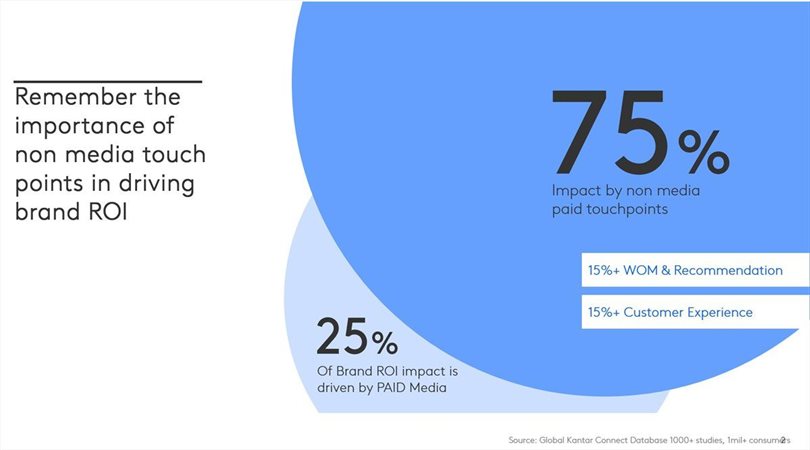Right now, investment depends on the category and the specific product or service you’re promoting. Categories like FMCG, technology and entertainment are continuing to advertise, while the travel sector has obviously cutback. Taken with consumers’ habits transferring to more in-home friendly media options, we are seeing decreases and cancellations on client media plans for cinema, OOH and sports sponsorships. We’re also seeing a revision of how TV, radio and audio, online and social media, in particular, are now being deployed.
Even though the pace of change in the media sphere right now is rapid, the basic cornerstones of a great media strategy remain the same:
- What is the core campaign objective and what is the role of the different media touchpoints in delivering the desired objective?
- What is the best way to reach and engage with the desired audience?
- How can a brand maximise all of the above within the budget that’s available?
What should you do right now?
Don’t go dark (and we don’t mean advertising only): Our brand guidance data has previously shown that brands that ‘go dark’ see significant saliency declines compared to more resilient brands that maintain a level of in-market presence. It’s vital that all brands consider how they continue to build longer-term preference, so they are prepared for when the situation recovers. Brands that hold their nerve while competitors reduce spend are likely to benefit strongly.

Think beyond paid-for media: It’s not just paid-for media that will experience shifts. It’s important to understand the role of different consumer touchpoints in a fast-changing environment, as brands can use these shifts to their advantage. We know that 75% of brand growth is delivered through non-paid media touchpoints. With 15% of this delivered through positive brand experience and 15% through positive recommendation and word of mouth (WOM), it makes sense to ensure you have the right mix for your brand and understand what your competitors are doing. This is as true in a crisis as ever before and is the time to think creatively about using owned and earned touchpoints in promoting and amplifying messages in a relevant way.

Keep content relevant: Only 2% of South Africans feel that brands should stop advertising right now, however, they do stipulate that whichever media touchpoints are used, the tonality of content is key. Up to 80% of South Africans agree that brands should not exploit the current situation and that communicating brand values is appreciated (78%). Added to this, the majority of consumers (63%) feel that brands should communicate in the way they have always done. There is, however, a cautionary tale, as 44% of South Africans believe that brands should avoid humour in their advertising in these times. It is, therefore, key that brands remain mindful of current consumer sentiment.

Integrate across all platforms: On average, integrated campaigns deliver 16% more growth across key brand metrics of awareness, consideration and positioning than disjointed campaigns. In addition, campaigns that are customised to every touchpoint deliver a further 10% return. Marketers starting with a cohesive and compelling idea, therefore, set their brands up for success across all their advertising channels. A central idea should limit the number of messages, however, adaptation across channels and formats is critical to increasing campaign impact. That means going beyond simply taking the same video across TV and digital formats, to first understand how the content will be consumed and adapting it to the right channel and media to increase impact.

Keep the role and strengths of every touchpoint in mind: When looking at the percentage impact across touchpoints, it is clear that all touchpoints can build brands. So, the best practice when deciding which touchpoints to include in campaigns has always been to consider the role of that touchpoint in a media plan. This key angle of decision-making should not change.
Every touchpoint is unique, for example:
- TV offers high levels of national reach and a multimedia experience
- Digital platforms offer a more immersive experience and higher levels of lean-in engagement than TV
- Radio offers exceptional regional targeting and easier adoption of language-specific targeting
- Newspapers offer an immersive readership experience and are seen as a trusted source of information
Although the above is by no means exhaustive, it does showcase the need to carefully consider the role of each touchpoint in delivering the ultimate brand positioning.
Brands need to adopt the right strategy, balancing short-term need and long-term recovery.
How can Kantar help?
Kantar’s connected media intelligence offer means we can support clients and answer their questions about media measurement, effectiveness and evaluation.
For more information on how to tailor your creative content and advertising messaging for South African audiences, join Kantar’s next webinar from noon on 9 April, register your place here.
Click here to listen to our ‘navigating growth in a Covid-19 world’ webinar recording on-demand or reach out to us over email at moc.ratnak@scitanafdnarb with any questions.
Also, stock up on updates and insights to help your brand manage the effects of Covid-19 and prepare for the future on our Covid-19 page. Follow us on Kantar LinkedIn and Twitter to keep up to date with our comms, and stay safe!
